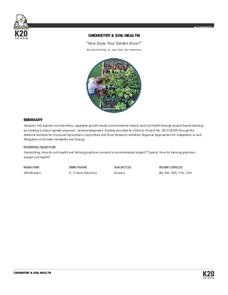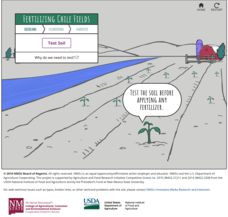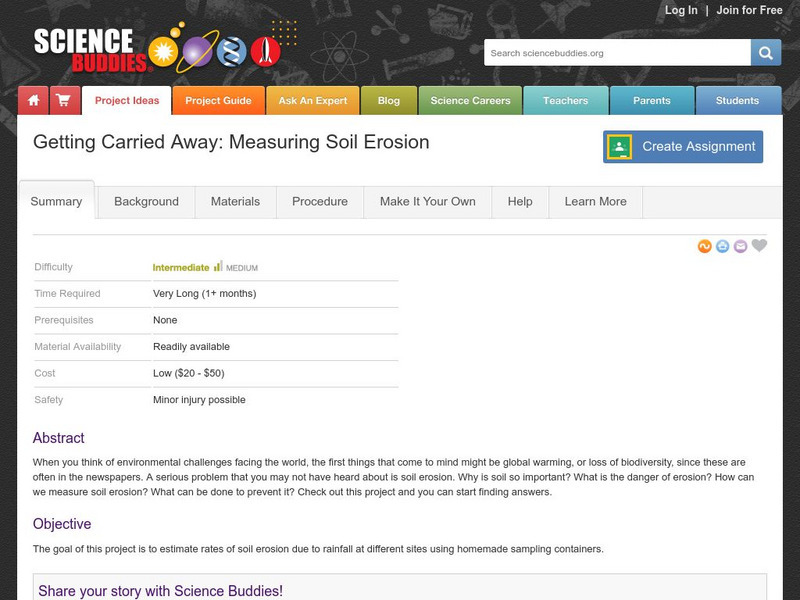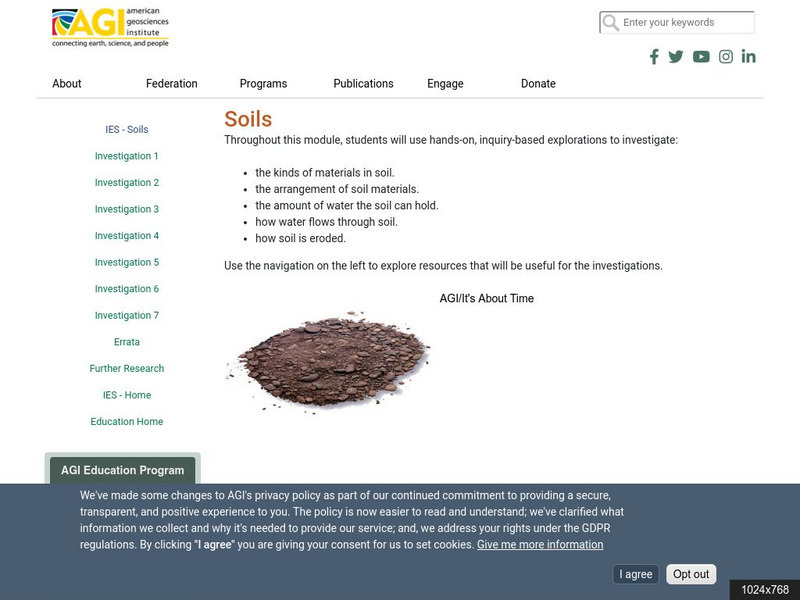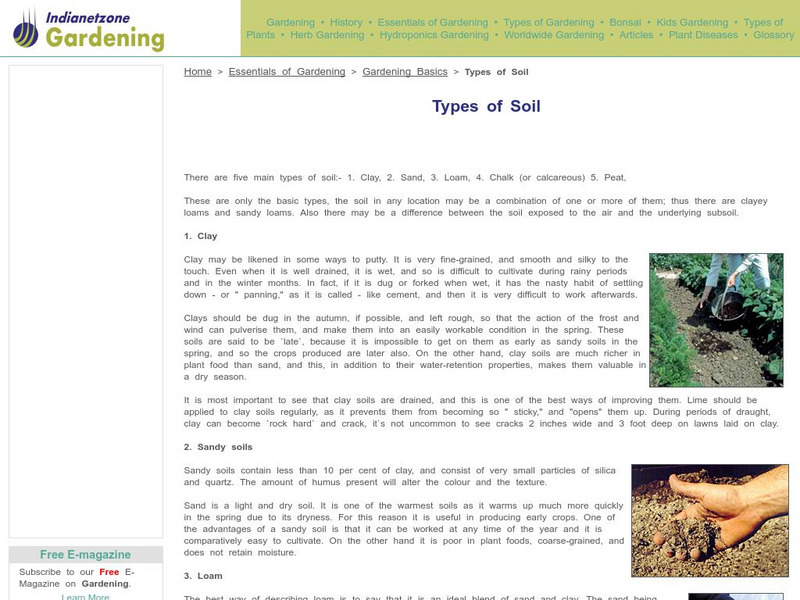Kenan Fellows
Sustainability: Learning for a Lifetime – Soil
Do great gardeners really have green thumbs—or just really great soil? Environmental scholars discover what makes Earth's soil and soil quality so important through research and experimentation. Learners also develop an understanding of...
K20 LEARN
How Does Your Garden Grow?
Seventy thousand different types of soil exist in the United States alone. Young scientists learn about the importance of soil to the food supply. They test soil for a variety of factors and determine the best place to set up a community...
University of Waikato
Investigating Soil Moisture Content
Class members analyze the water content in soil samples by drying out the samples and taking measurements every minute until all the moisture is gone. Scholars compare the initial weight to the dried weight to calculate the percentage of...
Learning Games Lab
Fertilizing Chile
Fertilizer can mean the difference between a profit and a loss. Scholars use an online interactive to explore the effects of fertilizing in agriculture. Given information about the nitrogen levels in the soil, they decide the fertilizer...
Columbus City Schools
Biome Basics with a Disastrous Twist
Bored with your current biome bag of tricks? This bundle is a bountiful bag of biome fun! Travel the globe with seventh graders and explore the biotic and abiotic factors that define our world's biomes. Then, introduce a little chaos to...
Columbus City Schools
Thinking Like A Soil Scientist
Ready to roll up those sleeves and get your hands dirty? Dirty with soil science content, that is! Overcome those "But it's just dirt" objections with a trip outside to collect soil samples for some in-class analysis. Use the variety of...
Cornell University
Study Soil
What's in soil? Young scientists study the pH levels of soil from their school yard. They observe the land and area the soil came from to decide if location has anything to do with acidity level.
Curated OER
The Marvels of Mud
Young scientists roll up their sleeves and get a little dirty in this three-day earth science investigation. Following the scientific method, children monitor the growth of algae in pond water samples in order to determine the role that...
Curated OER
Archaeological Soils
Eighth graders identify the composition of a soil sample. In this archaeology lesson plan, 8th graders describe the different soil layers formed in their activity. They explain how this pattern help archaeologists evaluate soil types.
Curated OER
Soil Composition
Students examine soil. In this soil composition lesson students participate in soil sedimentation and filtration activities. The students discuss what non-living and living things are in soil and why it is so important.
Curated OER
Soil Types
Fifth graders examine how sand and rock fragments in soil are products of erosion or the weathering of rocks. They listen to the book "Sand" by Ellen J. Prager and answer discussion questions. Next, they analyze sand samples and sort...
Curated OER
Rocks and Soils Graphic Organizer
In this earth science worksheet, students complete a chart by describing different types of rocks and soils. They search for the specified rocks in their world and describe them using the words in a word bank at the bottom of the page.
Curated OER
Digging in the Dirt
First graders awareness is raised that not all dirt is the same. They compare and observe particle sizes in three different kinds of soils. They keep a record book of what the discover and talk about how some soils are alike and some...
Curated OER
Burt County, NE, Soil Survey
Students identify the soil types and textures, and locate the waterways in or near the towns of Lyons and Decatur, Nebraska. They analyze soil profile maps, and answer conclusion questions.
Science Buddies
Science Buddies: Get Down and Dirty: How Does Soil Change With Depth?
What covers less than 10% of the Earth's surface, yet is a vital natural resource for terrestrial life? What filters ground water and supports most of our food production, not to mention the production of building materials and paper?...
Science Buddies
Science Buddies: Getting Carried Away: Measuring Soil Erosion
When you think of environmental challenges facing the world, the first things that come to mind might be global warming, or loss of biodiversity, since these are often in the newspapers. A serious problem that you may not have heard...
Science Buddies
Science Buddies: Solid Ground? Measuring Soil Bearing Capacity
Foundations for many types of structures rest on soil. This project shows how you can investigate the bearing capacity of different types of soil.
American Geosciences Institute
American Geosciences Institute: Soils
Seven hands-on lessons module allows students to learn about soils. These inquiry-based investigations explore the kinds and arrangements of materials in soils, the amount of water that flows through soil, and how soil is eroded.
Other
Indianetzone: Types of Soil
Get to know the five different kinds of soil .. clay, sand, loam, chalk, and peat.
University of Illinois
University of Illinois Extension: The Great Plant Escape: Soiled Again
Help Detective Le Plant dig for clues in the soil to solve this case. You'll need to find out what soil is, why it is important, and in what kinds of soil plants grow.
Utah Education Network
Uen: Sand, Clay and Humus
Fourth graders study the differences between humus, sand, and clay soil.
CK-12 Foundation
Ck 12: Earth Science: Types of Soils
[Free Registration/Login may be required to access all resource tools.] Describes different types of soil.
Enchanted Learning
Enchanted Learning: Soil Layers
Wonderful visual chart showing the six layers of soil. Also includes brief descriptions of the 12 types of soil and soil formation. Worksheet for students to label the layers of the soil is also included.



